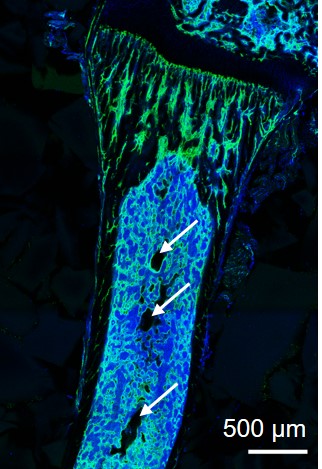Tamoxifen is frequently used in research using genetically modified mice, as it induces the transfer of the CreERT2 recombinase to the cell nucleus, which can then suppress the target genes of interest.
Researchers at IRIG administered tamoxifen to CreERT2 young mice. Ten days later, they observed morbidity and mortality: the young mice stopped gaining weight and showed hematological defects with severe anemia and disorganization of the bone marrow vascular bed (see
figure). These results show that activation of CreERT2 by tamoxifen significantly reduces cell proliferation in the bone marrow and spleen. This is due to a toxic side effect of the CreERT2 recombinase. This discovery should allow a better use of these models, improving the accuracy of the interpretation of the observed phenotype, saving time and resources.
The results of the study carried out by the researchers show the need to include CreERT2 controls injected with tamoxifen, without targeting the gene of interest, in experimental designs.

Figure: disorganization of the bone marrow in the femur of a tamoxifen-injected CreERT2 young mouse (see arrows). Confocal microscopy: cell nuclei (blue) and blood vessels (green).